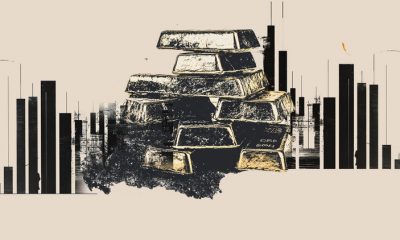

others
Dow Jones declines as inflation fears pummel risk appetite – Crypto News
- Dow Jones tumbles as inflation concerns return to cloud rate cut hopes.
- US wage pressures increased, driving fresh inflation fears.
- Dow Jones backslides 400 points, falls below 38,000.
The Dow Jones Industrial Average (DJIA) declined alongside the other major US equity indexes as risk aversion strikes again just ahead of Wednesday’s latest Federal Reserve (Fed) rate call. The Fed’s two-day rate decision meetings started today, and investors are balking as the Fed kicks off rate discussions with a fresh batch of data suggesting inflation remains a sticky problem for the US.
US wage pressures and housing costs remain inflation risk
The US Employment Cost Index for the first quarter rose 1.2% QoQ, accelerating from the forecast uptick to 1.0% and the previous quarter’s 0.9%. The US S&P/Case-Shiller Home Price Indices for the year ended February rose 7.3%, above the forecast 6.7% and accelerating from the previous period’s 6.6%.
The Chicago Purchasing Managers Index (PMI) in April also fell to nearly a two-year low of 37.9, sharply lower than the forecast 44.9 and the previous month’s 41.4. The Consumer Board’s Consumer Confidence Index also declined to its lowest reading since July of 2022, falling to 97.0 from the previous month’s 103.1 (revised down from 104.7).
With housing inflation and wage growth continuing to outrun forecasts and expectations, hopes for near-term rate cuts from the Fed are evaporating, knocking risk appetite down at the knees. The Fed’s latest rate call is slated for 18:00 GMT on Wednesday, followed by a press conference at 18:30 and headed by Fed Chair Jerome Powell.
Dow Jones news
Market hopes for 2024 rate cuts have fallen steeply in the first half of the year. Investors kicked off January expecting around six rate cuts from the Fed through the year, and Tuesday’s inflation figures have knocked rate cut expectations all the way down to a single 25-basis-point cut in 2024. Markets now see a 51% chance of no rate cut in September, making November the current market favorite bet for a first rate trim.
Nearly all of the securities that make up the Dow Jones are in the red on Tuesday, with the only notable gainer in 3M Co. (MMM), which is up around 3.5% on the day after the company posted better-than-expected earnings. MMM is trading into $95.34 per share. Tuesday’s worst DJIA security is Caterpillar Inc. (CAT), which backslid nearly 4$ and traded down 13 points into $337.00 per share.
Dow Jones technical outlook
The Dow Jones set an early high of 38,385.32 on Tuesday before risk aversion gripped investors, dragging the DJIA down to a low of 37,943.04. The major equity index is poised for further declines after breaking down below the 38,000.00 price handle.
The Dow Jones faces a technical rejection from the 200-hour Exponential Moving Average (EMA) at 38,337.24. Downside pressures are clear until the last near-term swing low into 37,750.00, while the index remains down 1.3% from last week’s peak bids near 38,550.00.
Dow Jones five-minute chart
Dow Jones daily chart
Inflation FAQs
Inflation measures the rise in the price of a representative basket of goods and services. Headline inflation is usually expressed as a percentage change on a month-on-month (MoM) and year-on-year (YoY) basis. Core inflation excludes more volatile elements such as food and fuel which can fluctuate because of geopolitical and seasonal factors. Core inflation is the figure economists focus on and is the level targeted by central banks, which are mandated to keep inflation at a manageable level, usually around 2%.
The Consumer Price Index (CPI) measures the change in prices of a basket of goods and services over a period of time. It is usually expressed as a percentage change on a month-on-month (MoM) and year-on-year (YoY) basis. Core CPI is the figure targeted by central banks as it excludes volatile food and fuel inputs. When Core CPI rises above 2% it usually results in higher interest rates and vice versa when it falls below 2%. Since higher interest rates are positive for a currency, higher inflation usually results in a stronger currency. The opposite is true when inflation falls.
Although it may seem counter-intuitive, high inflation in a country pushes up the value of its currency and vice versa for lower inflation. This is because the central bank will normally raise interest rates to combat the higher inflation, which attract more global capital inflows from investors looking for a lucrative place to park their money.
Formerly, Gold was the asset investors turned to in times of high inflation because it preserved its value, and whilst investors will often still buy Gold for its safe-haven properties in times of extreme market turmoil, this is not the case most of the time. This is because when inflation is high, central banks will put up interest rates to combat it. Higher interest rates are negative for Gold because they increase the opportunity-cost of holding Gold vis-a-vis an interest-bearing asset or placing the money in a cash deposit account. On the flipside, lower inflation tends to be positive for Gold as it brings interest rates down, making the bright metal a more viable investment alternative.
-

 Blockchain1 week ago
Blockchain1 week agoCrypto Hedge Fund Veterans Seek $100M to Buy BNB, Emulating Saylor’s Bitcoin Strategy – Crypto News
-

 Blockchain1 week ago
Blockchain1 week agoChange In US Crypto Laws May Affect Charges In Do Kwon’s Criminal Case – Crypto News
-

 others1 week ago
others1 week agoXAG/USD extends decline as safe-haven flows ease – Crypto News
-

 Technology1 week ago
Technology1 week agoBranded smartwatches under ₹5000 for style and functionality: Top 10 picks for everyday wear – Crypto News
-

 Blockchain1 week ago
Blockchain1 week agoBest Crypto to Buy as Polymarket Nears $1B Valuation – Crypto News
-

 Cryptocurrency7 days ago
Cryptocurrency7 days agoSHIB Price Prediction for June 26 – Crypto News
-

 others6 days ago
others6 days agoGold retreats while Fed Powell and President Trump clash over interest rates – Crypto News
-

 Cryptocurrency5 days ago
Cryptocurrency5 days agoFriday charts: Retail is one-upping Wall Street – Crypto News
-

 others1 week ago
others1 week agoPolemos Launches PLMS Token On MEXC and Uniswap, Advancing Web3 Gaming Infrastructure – Crypto News
-

 Cryptocurrency1 week ago
Cryptocurrency1 week agoStory (IP) surges after whales buy 16M tokens – Crypto News
-
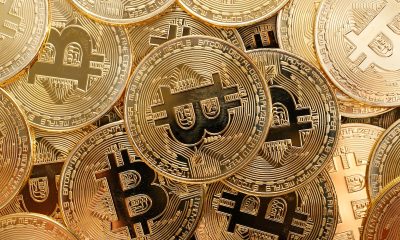
 Blockchain1 week ago
Blockchain1 week agoInvestor Anthony Pompliano Launches $1B Bitcoin Treasury Firm – Crypto News
-
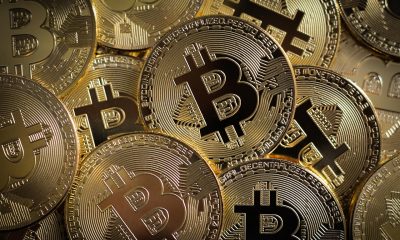
 Blockchain1 week ago
Blockchain1 week agoBitcoin Price Could Rally To $110,000 ATH As These Macroeconomic Factors Align – Crypto News
-

 Technology7 days ago
Technology7 days agoTop 10 air coolers for monsoon: Handpicked products for effective cooling from trusted brands – Crypto News
-

 others6 days ago
others6 days agoEUR/JPY steadies near 169.00 as traders await the next catalyst – Crypto News
-

 Technology1 week ago
Technology1 week agoElon Musk’s Tesla Robotaxi launches in Austin: Here’s how much it costs – Crypto News
-

 others1 week ago
others1 week agoSolana (SOL) and Aptos (APT) Named As Top Candidates for Wyoming’s Proposed Stable Token Program – Crypto News
-

 Blockchain1 week ago
Blockchain1 week agoCrypto ETPs Post $1.2B Inflows While Spot Prices Drop – Crypto News
-

 others1 week ago
others1 week agoRich Dad Poor Dad Author Says ‘Biggest Crash in History’ Approaching While Baby Boomers Lose Retirements to Inflation – Crypto News
-

 Blockchain1 week ago
Blockchain1 week agoAnchorage to Integrate Uniswap to Wallet for Insitutional DeFi – Crypto News
-
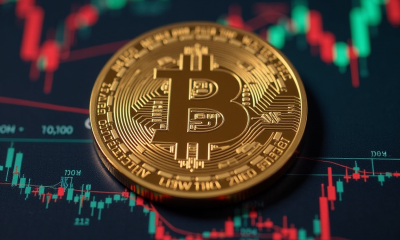
 Cryptocurrency1 week ago
Cryptocurrency1 week agoBitcoin rallies to $106K on Mideast ceasefire news; Circle shares continue explosive climb – Crypto News
-
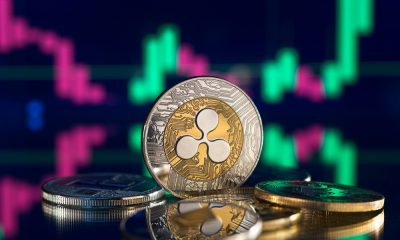
 Cryptocurrency1 week ago
Cryptocurrency1 week agoWhat next for XRP after breaking above the $2.15 resistance? – Crypto News
-

 Cryptocurrency1 week ago
Cryptocurrency1 week agoBitcoin alert! – Should BTC traders brace for $82K in a market reset? – Crypto News
-

 Technology1 week ago
Technology1 week agoOpenAI quietly removes all mention of Jonny Ive’s ‘IO’, but deal stays on: What you need to know – Crypto News
-
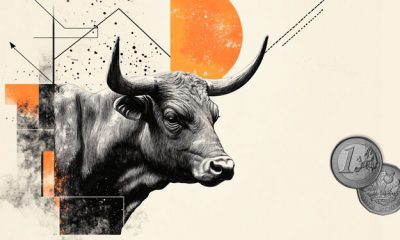
 others1 week ago
others1 week agoEUR/GBP gathers strength above 0.8550 ahead of Eurozone/UK PMI releases – Crypto News
-
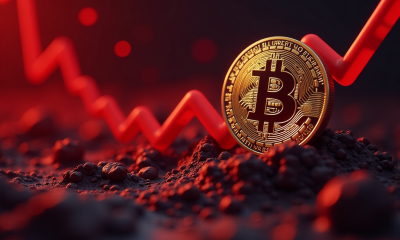
 Cryptocurrency1 week ago
Cryptocurrency1 week agoBitcoin bounces after dip to under $99K – Crypto News
-

 others1 week ago
others1 week agoWalmart Ordered To Pay $10,000,000 After Retail Giant Allegedly ‘Turned a Blind Eye’ to Scammers Exploiting Customers – Crypto News
-

 Blockchain1 week ago
Blockchain1 week agoBitcoin Wobbles? Metaplanet Buys Big, Breaks $1 Billion Mark – Crypto News
-

 others1 week ago
others1 week agoIndian Rupee recovers as Oil falls post Iran strike, Fed dovish signals limit US Dollar strength – Crypto News
-

 Blockchain1 week ago
Blockchain1 week agoBearish Breakdown Meets Bullish Flag, Which Will Prevail? – Crypto News
-

 Blockchain1 week ago
Blockchain1 week agoBearish Breakdown Meets Bullish Flag, Which Will Prevail? – Crypto News
-

 Blockchain1 week ago
Blockchain1 week agoCutting Block Times To Boost Performance – Crypto News
-

 others1 week ago
others1 week agoUS stocks downplay Iran retaliation concerns as indices edge higher – Crypto News
-

 others1 week ago
others1 week agoBank of America, Netflix and Apple Customers Targeted by Widescale Google Search Scams: Report – Crypto News
-

 others1 week ago
others1 week agoTariffs may be adding a quarter of a percentage point to inflation right now – Crypto News
-

 Technology1 week ago
Technology1 week agoUS judge rules Anthropic’s use of books for AI training is fair use: All you need to know – Crypto News
-

 Technology1 week ago
Technology1 week agoOpenAI and Jony Ive’s AI hardware ambitions hit roadblock over trademark dispute: Report – Crypto News
-

 Technology1 week ago
Technology1 week agoBest laptops under ₹40,000 (June 2025) with latest processors, SSD storage, and Windows 11 features, Top 10 picks – Crypto News
-

 Technology1 week ago
Technology1 week agoTurkey plans stricter crypto rules to fight money laundering – Crypto News
-

 others1 week ago
others1 week agoWinnebago Industries (WGO) tops Q3 earnings estimates – Crypto News
-
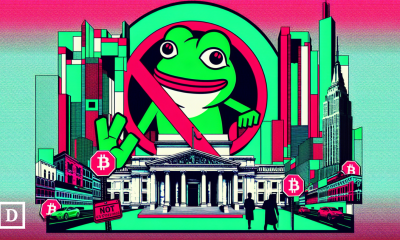
 De-fi7 days ago
De-fi7 days agoBarclays to Ban Crypto Purchases via Credit Card – Crypto News
-

 others6 days ago
others6 days agoAI-Focused Layer-1 Blockchain Altcoin SAHARA Flames Out Following New Binance Listing – Crypto News
-

 Cryptocurrency5 days ago
Cryptocurrency5 days agoTRON price forecast as USDT supply surpasses $80 billion – Crypto News
-

 De-fi1 week ago
De-fi1 week agoVisa Expands Stablecoin Push to EMEA With Yellow Card Partnership – Crypto News
-

 Blockchain1 week ago
Blockchain1 week agoHAI Token Drops After Private Key Leak – Crypto News
-
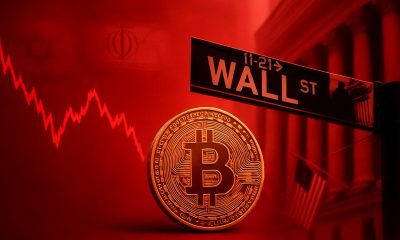
 De-fi1 week ago
De-fi1 week agoBitcoin Slides Below $102,000 as Israel–Iran Clash Triggers $500 Million Crypto Liquidations – Crypto News
-

 Technology1 week ago
Technology1 week agoTop 10 8kg washing machines in June 2025 worth checking if you want a balance of space, speed, and value – Crypto News
-

 others1 week ago
others1 week agoFactSet research (FDS) Q3 earnings lag estimates – Crypto News
-

 De-fi1 week ago
De-fi1 week agoPayments Giant Fiserv to Roll Out ‘Bank-Friendly’ Stablecoin on Solana – Crypto News
-

 Technology1 week ago
Technology1 week agoGoogle introduces AI-powered Chromebook Plus 14: Features, specifications, and more – Crypto News
-

 Cryptocurrency1 week ago
Cryptocurrency1 week agoPolymarket ‘politics’ markets surge, Celestia rethinks consensus – Crypto News



![IONQ Elliott Wave technical analysis [Video]](https://dripp.zone/news/wp-content/uploads/2025/07/IONQ-Elliott-Wave-technical-analysis-Video-Crypto-News-400x240.jpg)
![IONQ Elliott Wave technical analysis [Video]](https://dripp.zone/news/wp-content/uploads/2025/07/IONQ-Elliott-Wave-technical-analysis-Video-Crypto-News-80x80.jpg)


